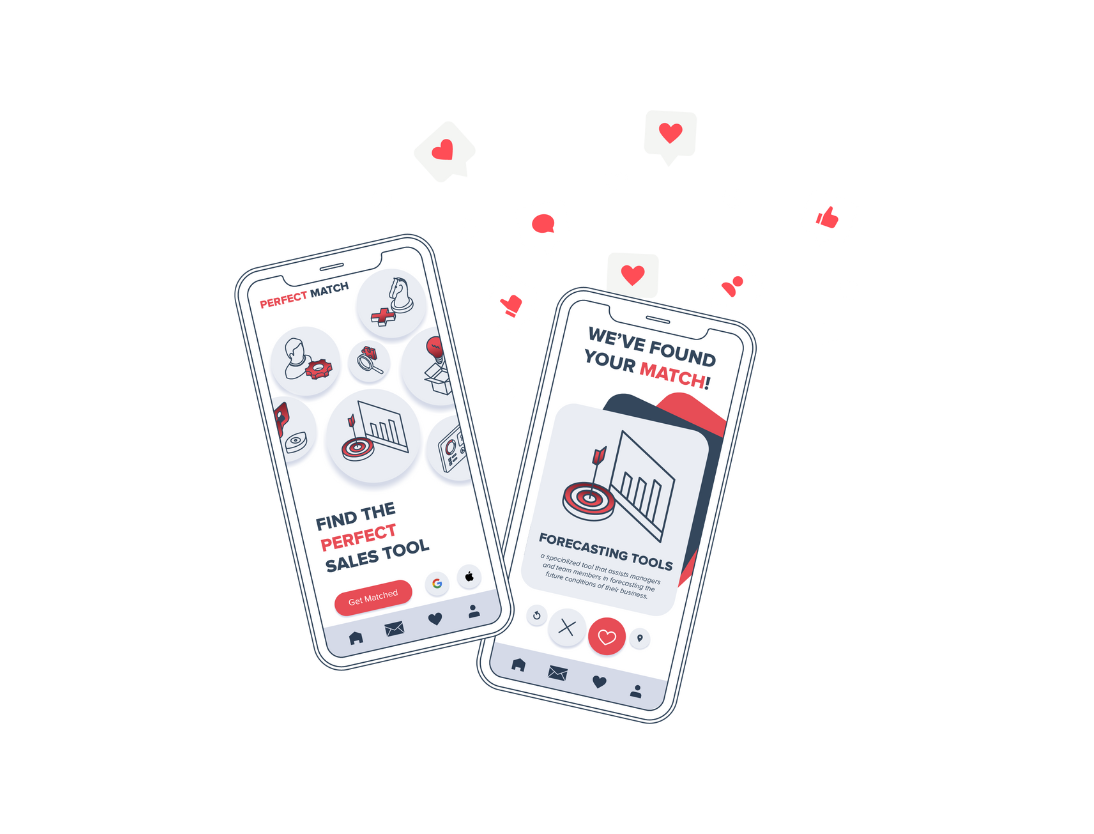This article delves into the intricate realm of sales metrics and reporting, uncovering their indispensable role in guiding you toward strategic growth.
In today's rapidly evolving business landscape, success hinges on informed decision-making, and data is the currency that drives those decisions.
Among the myriad of data-driven insights, sales metrics stand as beacons of strategic guidance, illuminating the path to growth and prosperity.
As the captain of corporate strategy, you must grasp the significance of key sales metrics and leverage them to steer your organisation toward success.
Table of contents:
The world of sales metrics: overcoming avoidance
Despite their undeniable significance, there's often an apprehension around metrics and reporting. The reluctance to engage with metrics can stem from various sources, each presenting its unique challenges.
Let’s explore some of these sources of apprehension in more detail.
Lack of clarity on the purpose
This can leave individuals wondering about the value metrics bring. When the connection between data and decision-making isn't evident, it's natural for metrics to be perceived as time-consuming distractions.
Without a clear understanding of how data translates into benefits, people may view metrics as an unnecessary effort, sidelining them in favour of more immediate tasks.
Perception of being time-consuming
This perception also plays a pivotal role in metric avoidance. If working with metrics demands extensive data gathering and manual analysis, it can seem like an arduous process.
With time often equated to money, individuals may opt to allocate their efforts elsewhere, unaware of the long-term strategic value metrics can bring.
Fear of accountability
This fear casts another shadow on metric engagement. Metrics lay bare performance and outcomes, potentially making individuals apprehensive about their standing within the organisation.
The fear of being judged solely on numbers can deter engagement, as people are wary of inviting scrutiny and possible consequences.
A lack of understanding or skills
This adds another layer of complexity.
Metrics often require data analysis, interpretation, and presentation skills. When individuals lack these capabilities, they might feel overwhelmed and unsure of how to navigate the intricate world of data.
This uncertainty further discourages them from engaging with metrics.
Perception of low impact or value
Continuing from the above, if the impact or relevance of metrics isn't adequately communicated, they might be perceived as low-value endeavours.
When the link between data insights and strategic decision-making remains vague, people might question the worth of dedicating time and energy to metrics.
These concerns underscore the importance of fostering a culture of data-driven decision-making. To overcome these challenges, organisations must provide proper guidance, training, and communication.
By demonstrating how metrics tie into strategic goals, and by empowering individuals with the skills needed to navigate the world of data, organisations can shift the narrative from apprehension to empowerment.
Metrics that matter for sales teams
In the realm of sales, where every interaction holds the potential for growth, the art of measurement transforms into a science of success. In this section, we delve deep into the metrics that wield transformative power for sales teams.
These metrics serve as guiding stars, illuminating the path to enhanced performance, precise decision-making, and strategic enablement. As you seek to unlock the full potential of your sales teams, these metrics emerge as invaluable tools for steering the ship of success.
Let's explore the metrics that truly matter, driving the engine of sales excellence:
- Sales revenue: The pinnacle of success, measuring the total revenue generated by the sales team within a specific timeframe.
- Sales quota attainment: Tracks the percentage of a salesperson's assigned quota achieved, reflecting their sales effectiveness.
- Sales conversion rate: Measures the ratio of converted leads to total leads, indicating the efficiency of the sales process.
- Average deal size: Gauges the average value of closed deals, providing insights into sales transaction magnitude.
- Sales pipeline value: Sum of the potential revenue from all opportunities in the pipeline, guiding forecasting and resource allocation.
- Activity metrics: Quantifies the volume of sales activities, such as calls, emails, and meetings, reflecting salesperson engagement.
- Sales cycle length: Measures the average time it takes to close a deal, unveiling process efficiency and potential bottlenecks.
- Win/loss ratio: Evaluates the proportion of successful deals to unsuccessful ones, reflecting sales effectiveness.
- Customer acquisition cost (CAC): Calculates the cost of acquiring a new customer, informing resource allocation.
- Customer lifetime value (CLV): Estimates the long-term value of a customer, guiding customer prioritisation.
- Territory performance: Assesses the sales performance within specific territories, aiding resource allocation and expansion.
- Sales forecast accuracy: Evaluates the precision of sales predictions compared to actual outcomes, enabling informed decision-making, resource allocation, and strategic planning.
Sales performance reports: illuminating the path forward
As you strive for strategic growth, you must harness the power of sales performance reports.
These reports offer a panoramic view of your organisation's sales landscape, guiding decisions and fostering continuous improvement.
Sales performance report: the big picture
The sales performance report acts as a compass, providing an overarching perspective of the sales team's accomplishments over a specified period.
It shines a light on crucial metrics such as total revenue, sales growth, conversion rates, and average deal size. By evaluating these metrics collectively, executives gain a holistic understanding of the team's contribution to the bottom line.
Sales pipeline report: navigating opportunities
The sales pipeline report delves deeper, focusing on the progress of sales opportunities and deals in various stages.
With this report, executives gain visibility into the various phases of the sales process, from initial engagement to final closure.
Metrics such as the number of deals, total pipeline value, and average time spent in each stage offer insights into pipeline health and the potential timing of revenue realisation.
Sales forecast report: charting the course ahead
One of the most valuable tools in an executive's toolkit is the sales forecast report.
This report combines quantitative sales forecasting data such as historical data, current trends, and market analysis to predict future sales.
By peering into the crystal ball of sales, executives can allocate resources strategically, set informed targets, and make decisions that steer the organisation toward success.
Sales by product/service, territory/region, and customer reports: precision navigation
To navigate success with finesse, executives must wield the scalpel of precision.
The sales by product/service report dissects sales performance by specific offerings, allowing for targeted analysis and informed decisions on inventory, pricing, and marketing strategies.
Similarly, the sales by territory/region report identifies high-performing regions, market trends, and expansion opportunities.
The sales by customer report segments the customer base, enabling you to tailor strategies and optimise engagement based on customer preferences and behaviour.
Sales conversion and performance by salesperson reports: informed strategy
Strategic navigation necessitates informed decision-making at every level.
The sales conversion report shines a spotlight on the sales funnel, highlighting where leads may falter and providing actionable insights to optimise conversion rates.
The performance by salesperson report allows you to evaluate individual sales team members' contributions. Metrics such as individual sales revenue, conversion rates, average deal size, and activity levels provide a comprehensive view of each team member's impact.
Sales trend analysis report: a compass for the future
Steering an organisation toward growth requires foresight, and the sales trend analysis report provides just that.
By examining sales data over time, executives can identify patterns, trends, and seasonality. This insight empowers them to anticipate cyclical fluctuations, adapt strategies accordingly, and guide the ship through both calm waters and turbulent seas.
Navigating success with sales leadership reports
In this section, we explore the diverse landscape of sales leadership report types—tools that empower leaders to chart their course, harness data-driven insights, and steer their teams towards triumphant horizons.
- Customer segmentation report: Categorises customers based on shared characteristics, enabling tailored marketing and sales strategies for each segment.
- Customer lifetime value (CLV) report: Measures the long-term value of customers, guiding prioritisation and resource allocation for customer retention.
- Customer churn report: Identifies customer attrition rates and reasons for churn, informing strategies to enhance customer loyalty and retention.
- Cross-selling and upselling report: Evaluates the success of cross-selling and upselling efforts, enabling targeted approaches to increase revenue per customer.
- Customer engagement report: Measures customer interaction frequency and engagement metrics, assisting in fostering meaningful customer relationships.
- Sales opportunity analysis report: Provides insights into the status and progress of sales opportunities, assisting in optimising the sales pipeline.
- Customer support and service report: Evaluates customer support performance, tracking response times, issue resolution rates, and customer feedback.
- Customer referral report: Tracks customer referrals and the effectiveness of referral programs, guiding appreciation and engagement strategies.
- Sales and marketing campaign performance report: Measures the effectiveness of sales and marketing campaigns, aiding future campaign optimisation.
Sales leadership reports are the tools that elevate leadership from gut instincts to data-driven strategies.
By leveraging these insights, leaders can steer their teams toward unparalleled growth, enhanced customer relationships, and strategic victories.
Sales enablement reports: empowering the journey
In the final chapter of our exploration, we delve into the empowering world of sales enablement reports.
These reports are the wind beneath the sales team's wings, equipping them with resources, insights, and strategies that amplify their effectiveness.
Sales content performance report: arming the front line
The sales content performance report equips sales representatives with the ammunition they need to excel.
By tracking the performance and usage of sales content such as presentations, brochures, case studies, and product collateral, this report identifies the most effective tools for engaging prospects and driving sales.
Sales training effectiveness report: nurturing expertise
The sales training effectiveness report evaluates the impact of sales training programs on sales teams. Metrics such as knowledge retention, skill development, and behaviour change provide a clear picture of training efficacy.
Armed with this knowledge, executives can refine training initiatives and ensure that sales teams are equipped with the knowledge and skills needed for success.
Sales call analytics and competitive analysis reports: a competitive edge
The sales call analytics report dissects sales conversations, shedding light on call quality, effectiveness, and outcomes.
This data guides coaching efforts, informs training strategies, and optimises call quality to boost conversion rates.
On the other hand, the competitive analysis report empowers sales representatives with insights into the competitive landscape.
Armed with knowledge of competitors' strengths, weaknesses, and strategies, sales teams can engage prospects with targeted and compelling value propositions.
Sales forecasting and customer insights reports: informed strategy
The sales forecasting report gives executives a window into the future, enabling proactive planning and resource allocation.
Meanwhile, the customer insights report consolidates customer data, such as demographics, preferences, purchase history, and engagement metrics.
Armed with these insights, sales representatives can tailor their messaging, deepen customer relationships, and drive personalised interactions.
Forging ahead with Huble's sales consultancy expertise
Remember that the journey of data-driven success is a continuous one.
The insights gathered from these metrics are not just numbers; they are the guideposts that lead businesses toward strategic growth, enhanced customer relationships, and increased revenue.
At Huble, we understand the importance of leveraging the power of sales metrics for data-driven decision-making. Our expertise in sales consultancy and managed services equips you with the tools and strategies to leverage your data effectively.
Speak with our team today to learn how Huble's sales consultancy services can empower your business with actionable insights and strategies derived from your sales metrics.













